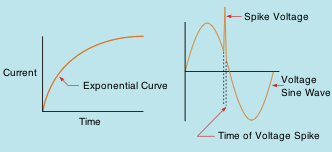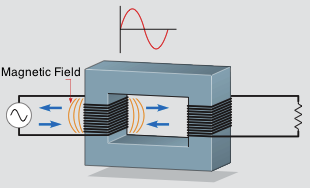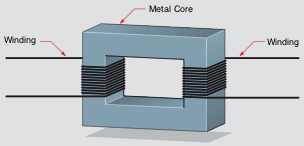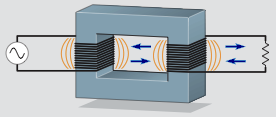Isolation transformers indicates that the secondary winding is physically and electrically isolated from the primary winding. There is no electric hookup between the primary and secondary winding. The transformer is magnetically combined, not electrically paired. The line isolation is frequently a very desirable attribute. Isolation transformers significantly minimizes any voltage increases that stem on the supply side, prior to they are moved to the load side. Some isolation transformers are built with a turns ratio of 1:1. A transformer of this type has the same input and output voltages and is used for the function of isolation only.

An isolation transformer has its primary and secondary windings electrically separated from each other.
The reason that the isolation transformers can considerably reduce any voltage spikes prior to they reach the secondary is because of the grow time of current through an inductor. DC in an inductor increases at a rapid rate. As the current rises in value, the broadening magnetic field cuts through the conductors of the coil and causes a voltage that is opposed to the used voltage. The amount of induced voltage is proportional to the rate of change of current.
This simply implies that the much faster current tries to increase, the greater the opposition to that increase is. Spike voltages and currents are generally of very brief period, which means that they raise in value very quickly. This rapid modification of value triggers the opposition to the change to enhance just as quickly. By the time the spike has been transferred to the secondary winding of the transformer, it has been removed or greatly lowered.
Basic Operation of Isolation Transformers
One winding of? an isolation transformer has been linked to an AC supply, and the various other winding has actually been connected to a load. As current boosts from absolutely nothing to its peak positive point, a magnetic field expands outward around the coil. When the current decreases from its peak positive point towards zero, the magnetic field collapses. When the current boosts towards its negative peak, the magnetic field once again broadens however with an opposite polarity of that previously. The area again breaks down when the current lowers from its negative peak toward zero. This continuously broadening and breaking down magnetic field cuts the windings of the primary and induces a voltage into it. This induced voltage opposes the used voltage and limits the current flow of the primary. When a coil induces a voltage into itself, it is called self-induction.
The standard building of isolation transformers is revealed above. A metal center is made use of to provide great magnetic coupling between the two windings. The center is usually made of lamination?s stacked together. Laminating the center helps minimize power losses triggered by eddy current induction.
Excitation Current
There will always be some amount of current flow in the primary of any voltage transformer despite type or size even if there is no load linked to the secondary. This current flow is called the excitation current of the transformer. The excitation current is the quantity of current needed to allure the core of the transformer. The excitation current remains constant from no load to complete load. As a general rule, the excitation current is such a small part of the full load current that it is commonly left out when making computations.
Mutual Induction
Because the secondary windings of an isolation transformer are wound on the same core as the primary, the electromagnetic field produced by the primary winding also cuts the windings of the secondary. This continuously altering electromagnetic field causes a voltage into the secondary winding. The ability of one coil to cause a voltage into another coil is called shared induction. The amount of voltage caused in the secondary is identified by the ratio of the number of turns of wire in the secondary to those in the primary.
Multiple Tapped Windings
It is not uncommon for isolation transformers to be created with windings that have more than one set of lead wires connected to the primary or secondary. These are called multiple-tapped windings. The transformer revealed above includes a secondary winding rated at 24 volts. The primary winding consists of several taps, nevertheless. One of the primary lead wires is labeled C and is the typical for the various other leads. The other leads are labeled 120 volts, 208 volts, and 240 volts. This transformer is designed in such a manner that it can be linked to different primary voltages without altering the value of the secondary voltage. In this example, it is presumed that the secondary winding has a total amount of 120 turns of wire. To preserve the correct turns ratio, the primary would have 600 turns of wire in between C and 120 volts, 1040 turns between C and 208 volts, and 1200 turns between C and 240 volts.



